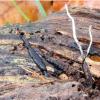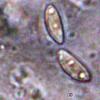
12-12-2025 18:39
Mirek GrycHello everyone.Macrofeatures similar to Mollisia b

09-12-2025 12:06
 Andgelo Mombert
Andgelo Mombert
Bonjour,Je recherche l'article concernant Hypobryo

07-12-2025 16:07
Arnold BüschlenHallo, ich habe in einer Moos-Aufsammlung (epiphy

08-12-2025 21:04
Mark Stevens"Hello everyone,I'm relatively new to microscopy (

08-12-2025 18:59
 Lothar Krieglsteiner
Lothar Krieglsteiner
.. found by a seminar-participant, I do not know t

08-12-2025 17:37
 Lothar Krieglsteiner
Lothar Krieglsteiner
20.6.25, on branch of Abies infected and thickened
X. rhopaloides
Menno Boomsluiter,
01-03-2021 17:01
I was wondering, if any, what the status of Xylaria rhopaloides is in Europe.
It is not present in the key by mr. Fournier. Maybe he can shed light on it.
The species is present in the book of Bertault.
Greetings,
Menno
Jacques Fournier,
01-03-2021 20:23

Re : X. rhopaloides
Hi Menno,
if I were you, I would forget about Bertault and his crappy species concepts.
X. rhopaloides is an ill-defined an dubious tropical or subtropical species, variously interpreted, referred to X. curta by Dennis, to X. castorea by Ju & Rogers.
However, if you found something in your region recalling X. rhopaloides sensu Bertault, please show it on the forum, with details on surface anatomy and ascospore morphology.
Cheers,
Jacques
Menno Boomsluiter,
10-03-2021 19:28
Re : X. rhopaloides
Hello Jacques,
Thank for your clear answer.
I was asked to confirm a find of X. rhopaloides. In the abcense of any accessible key I started wondering whether this species excisted in Europe at all. The before mentioned collection brought me straight to X. hypoxylon thsmks to your excellent key.
Spores:(9,9) 10,6 - 11,9 (14) × (3,8) 4,4 - 5,1 (5,3) µm
Q = (2) 2,2 - 2,6 (2,8) ; N = 15
Me = 11,3 × 4,7 µm ; Qe = 2,4
Q = (2) 2,2 - 2,6 (2,8) ; N = 15
Me = 11,3 × 4,7 µm ; Qe = 2,4
I sent you two photo's no1 the collection which I have keyed out as X. hypoxylon.
no2. a collection presumed to be X. rhopaloides.
Thank you very much for your help


